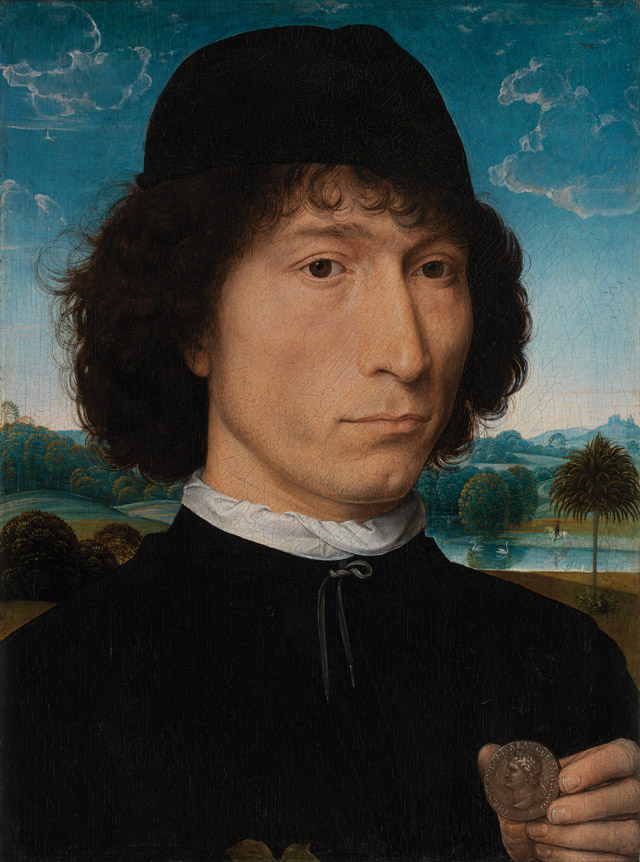After Memling's Portrait of Man with a Coin of the Emperor Nero
History

Man with a Roman Coin, 1471–74, Hans Memling, Netherlandish, c. 1430-1494, oil on panel, 12 x 9.1 in., Koninklijk Museum voor Schone Kunsten, Antwerp. © Koninklijk Museum voor Schone Kunsten, Antwerp. Photo: Lukas—Art in Flanders VZW.
Flemish artist Hans Memling was known for his portraits of the merchant and intellectual classes—a group that was beginning to emerge as a social and economic power in the 15th century. Upwardly mobile in their time, this burgeoning merchant class frequently selected the format of devotional portraits as a demonstration of their morally upright character. Details such as the coin of the Roman Emperor Nero in this work claim a powerful legacy to match the sitters’ own ambitions. Read through the lens of young black men, that claim takes on a radically contemporary meaning.

